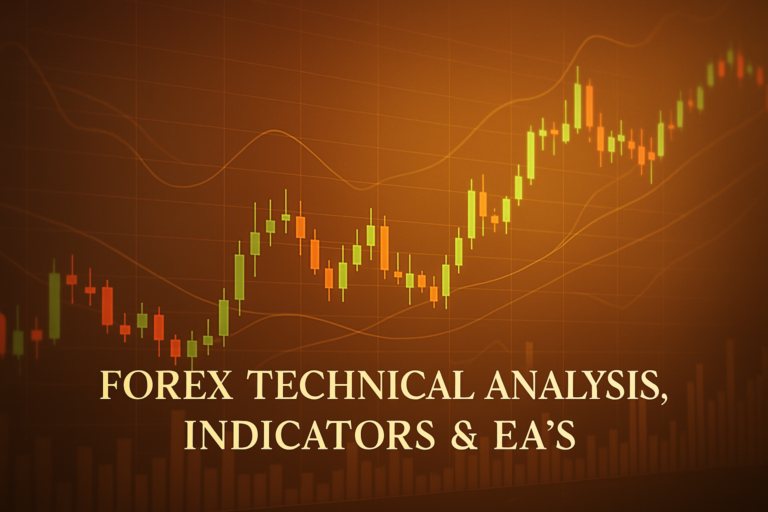
Stop-loss not activating despite price reaching the level can lead to unexpected losses. Learn how to manage this issue effectively in Forex trading.
In the world of Forex trading, every trader faces challenges. One major issue is when a stop-loss does not activate, even though the price reaches the desired level. This problem can lead to unexpected losses and frustration for both new and experienced traders. Understanding this issue is crucial for anyone involved in Forex trading.
Traders often struggle with stop-loss not activating despite price reaching the level due to several factors. These can be technical glitches or market conditions that cause price spikes. Knowing how to address this issue can save you from significant losses. It’s essential to grasp the reasons behind it to protect your investments.
On April 21, 2025, the Forex market saw significant movements influenced by various factors. For detailed insights, check out our Forex Fundamental News Analysis April 21, 2025.
Understanding the Problem
Let’s clearly define the problem: a stop-loss is a tool that traders use to limit their losses on a trade. Sometimes, traders find that their stop-loss does not trigger even when the market price hits their set level. This issue can be frustrating and costly.
There are a few reasons why this happens. One reason is slippage, where the market moves too quickly for the stop-loss order to be executed at the desired price. Another reason is during high volatility periods, such as major news announcements, when prices can jump dramatically. For example, imagine you set a stop-loss at 1.2000, but the price suddenly drops to 1.1990, causing your order to not activate properly.
Solutions for Stop-Loss Not Activating Despite Price Reaching the Level
Now, let’s talk about how to resolve or avoid this issue in the future. Here are some steps you can take:
- Choose the Right Order Type: Consider using a guaranteed stop-loss order (GSLO). This type of order ensures your stop-loss will execute at the exact price, even during volatile conditions.
- Monitor Market Conditions: Keep an eye on news events that may cause volatility. If you know a major announcement is coming, you may want to adjust your stop-loss accordingly.
- Set Alerts: Use alerts to notify you when your price level is reached. This way, you can manually close your position if necessary.
- Use a Reliable Broker: Ensure your broker has a good reputation for executing orders. A reliable broker reduces the chances of technical failures.
- Consider Time of Day: Some market hours are more volatile than others. Trading during calmer hours can help avoid issues with stop-loss activation.
For beginners, understanding the forex market basics is vital. It provides a foundation to make informed trading decisions.
Frequently Asked Questions
How do I detect this issue in real-time?
To detect stop-loss issues in real-time, monitor your trades frequently. Use trading platforms that offer real-time data and alerts. Additionally, check historical data to see if slippage has occurred in the past during similar market conditions.
Can brokers legally do this?
Yes, brokers can experience technical issues or slippage, but they should be transparent about their order execution policies. Always read broker reviews and terms to understand how they handle stop-loss orders.
What tools can I use to prevent this?
Utilizing advanced trading tools like automated trading systems can help. These systems can execute trades based on your criteria without delay. Also, consider platforms that offer features like guaranteed stop-loss orders for added security.
Is this problem more common in specific market conditions?
Yes, stop-loss not activating despite price reaching the level is more common during high volatility periods. Events like economic news releases or geopolitical tensions tend to create rapid price movements that can affect order execution.
Conclusion
In summary, understanding why your stop-loss may not activate is essential for all Forex traders. By implementing the right strategies and tools, you can manage and avoid this issue effectively. Stay informed and continually improve your trading strategies to protect your investments.
To navigate the complexities of Forex trading, remember that knowledge is power. Keep learning, and don’t hesitate to seek help when needed.
Recommended Next Steps
Now that you understand the problem of stop-loss not activating despite price reaching the level, consider these next steps:
- Research different order types and their benefits.
- Stay updated on market news.
- Evaluate your broker’s reliability and execution policies.
- Practice trading with a demo account to gain confidence.
- Join trading forums or communities for shared experiences.
By taking these steps, you can enhance your trading skills and minimize risks effectively.
Stay ahead of the game by reading expert-backed advice on this topic Kiplinger, TradingView
Expand Your Knowledge
- 📌 Forex Trading Learning Road Map
- 📌 Forex Trading Course with no Fees
- 📌 Forex Trading Issues, Problems, and Solutions
- 📌 Forex Daily Forecast & Live Updates
- 📌 Forex Fundamental & News Analysis: Tomorrow’s Market Movers & Trade Opportunities
- 📌 Forex Education Hub: Learn & Profit
- 📌 Forex Technical Analysis, Indicators & EA’s
Start Trading Today
Ready to take your forex trading to the next level? Open an account with Exness, one of the most trusted platforms in the industry. 👉 Sign Up Now and trade with confidence!
My recommended broker stands out with ultra-low spreads for beginners, instant withdrawals, and zero spread accounts for pro traders.
Trusted since 2008, lightning-fast execution, no hidden fees, and a secure, transparent trading environment—giving you the edge you need to succeed. 🚀
Watch this helpful video to better understand Stop-loss not activating despite price reaching the level:
Note: The video above is embedded from YouTube and is the property of its original creator. We do not own or take responsibility for the content or opinions expressed in the video.
In the video discussing the use of stop-loss orders in trading, the speaker presents a contrarian viewpoint on traditional advice. Many traders are often cautioned to use tight stop-losses to minimize potential losses. However, the speaker argues that this practice may actually be detrimental to traders’ success. The reasoning behind this is that, before a trade moves favorably, it often moves against the trader first. This means that traders with tight stop-losses are frequently eliminated from their positions right before the market turns in their favor. Instead, the speaker advocates for wider stop-loss gaps for traders who are confident in their trades. By allowing more room for fluctuations, traders can stay in the market longer and potentially profit from trades that would have otherwise resulted in a loss due to premature exit.
The speaker also emphasizes that stop-loss orders can have their place, particularly when significant market events are anticipated, which could lead to drastic price movements. However, even in these situations, it’s advised not to set stop-losses too tight. The speaker explains their own risk management strategy, which is not overly meticulous but rather intuitive. If a trade is not going well, they can usually determine it within a day and choose to exit without emotional attachment. This pragmatic approach allows them to minimize losses effectively. The speaker suggests that traders should develop their own criteria for determining when to close a trade based on market movements rather than relying solely on rigid stop-loss orders. This blend of confidence, intuition, and flexibility could lead to better trading outcomes for those engaged in Forex trading.
Forex exchange trading has become a popular choice for many aspiring and experienced traders alike, as it offers the opportunity to trade currencies from around the world. Understanding the dynamics of forex markets and the strategies that can be employed is crucial for success. For those interested in diving deeper into the world of trading, it’s essential to explore various insights and methodologies that can enhance trading skills. For more information on effective strategies and insights, check out this guide on forex exchange trading.





